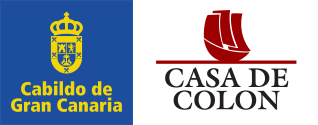En torno a la transmisión antigua del Periplo de Hannon / Regarding to the Ancient Periplus of Hannon
Palabras clave:
navegación, Atlántico, exploraciones, África, Cartago, navigation, Atlantic exploration, Africa, CarthageResumen
La navegación atlántica del cartaginés Hannon alcanzó una gran fama en la antigüedad, y son muchas las fuentes clásicas que hablan de la misma. Es cierto que esas menciones por lo general son muy imprecisas, y no denotan un conocimiento directo del texto. En el Codex Palatinus Graecus del Archivo Vaticano existe una relación que describe la actividad realizada por el navegante cartaginés. Dicho texto, conocido como Periplo de Hannon, ha sido objeto de múltiples estudios y discusiones desde su primera publicación en el siglo XVI. Pese a las dudas expresadas por un sector de la historiografía, en este artículo se defiende que existió un proceso lógico de transmisión ya en la misma antigüedad, en cuyo origen se encuentran algunos de los problemas que suscita la interpretación del texto. El texto griego del Periplo es la versión transmitida desde la segunda mitad del siglo II a. C. del original en lengua púnica que se hallaba expuesto en el templo de Moloch (Saturno) en Cartago.
The Atlantic voyages of the Carthaginian, Hannon achieved great fame in Antiquity. There are many classical sources that refer to the same, albeit in an imprecise manner and denoting little knowledge of the original text. In the Palatius Graecus Codex of the Vatican Archives, there is a list of the activities carried out by the Carthaginian seafarer. This text, known as the Periplus of Hannon, has been the subject of many studies and much debate since its first publication in the XVIth century. Despite the doubts raised from the historiographical perspective, this article defends that there was a logical process of transmission of the facts in Ancient times which to many effects have produced some of the problems of interpretation of the original text. The Greek text of the Periplus is the version in use from the late II century AD onwards as translated from the Punic of the original, on exhibit in the temple of Moloch (Saturn) in Carthage.








